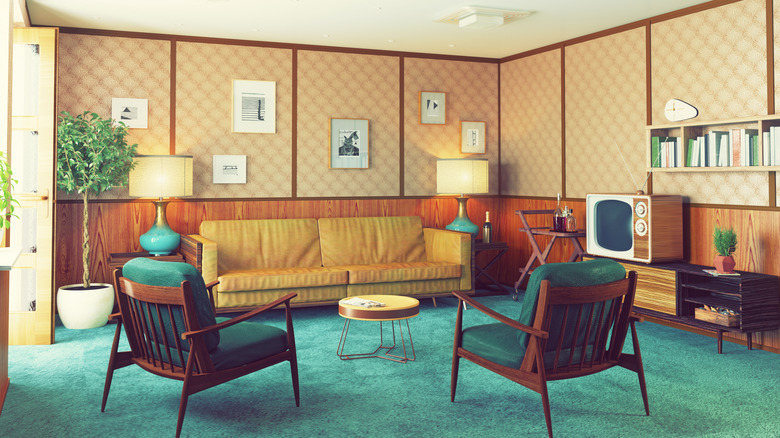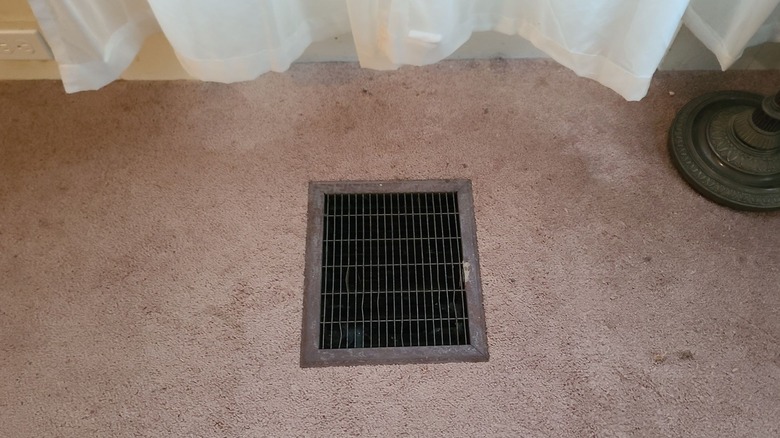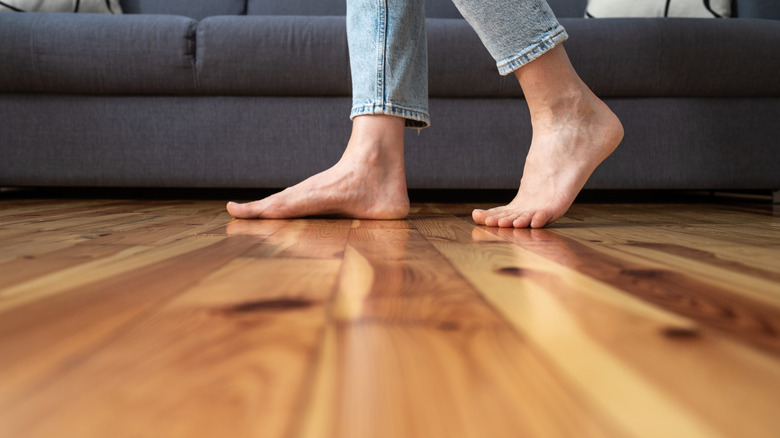The Tell-Tale Sign Beautiful Hardwood Floors Are Hiding Under Your Outdated Carpet
One of today's most practical luxuries for homeowners is investing in good hardwood flooring. It is low-maintenance, durable, and adds value to your home — increasing it by as much as 2.5%. That's why hardwood floors will always be the right choice for a home. A hundred years ago, building a house that came with solid oak, maple, or pine flooring already installed was the standard across the industry. This was made possible because of an abundance of forests in the early 1900s, which made timber widely available and more affordable. Today, installing hardwood floors in your home can cost upwards of $7,000. Which can be a costly endeavor — that is, unless you're overlooking a hidden treasure buried right underneath your feet. Simply by lifting up the floor vent cover in one of your rooms, you'll actually get a good idea of your floor's hidden surface.
If you are digging your toes into the outdated carpet that came with your mortgage payment, you might have some beautiful hardwood floors just waiting to be discovered underneath. So before you start pulling up that carpet or calling up carpet companies for replacement quotes, find out what's hiding with this simple approach. What you find can provide valuable information during a home renovation project and potentially help you uncover vintage hardwood floors in your home.
How to look for hidden treasures
If you purchased an older home that hasn't been updated since the 1950s, there's a good chance you're dealing with carpeted floors. Synthetic materials like carpet, as well as vinyl and linoleum, rose in popularity in the mid-century era due to affordability and overall ease of installation. It only took about thirty to forty years for hardwood flooring to become a design staple again, and now the idea of hidden hardwood floors can feel like finding buried treasure in your own home — but it requires a little detective work to find out for sure. To check if your home has hidden hardwood floors, you can follow a few simple steps in the easiest location to start the search.
Beginning in your living room, locate and remove your floor vent cover. This can usually be done by hand with a small screwdriver and only takes a few seconds. Once it is removed, you can gently lift up the edge of the carpet around the vent area. Note that you might need to pull up the padding as well as the carpet, depending on the installation. Then take a peek at what's underneath to see if it's hardwood material. Make sure to check multiple rooms if you want to confirm that the same flooring material was used throughout the entire house.
Is it genuine hardwood or something else
Various types of materials can be under your carpet, and it can be tricky to know if what you are looking at is the real thing. While the thought of genuine oak, maple, walnut, or hickory floors is exciting, it's important that you identify whether you're dealing with authentic hardwood or an alternative material, like engineered wood, laminate, or vinyl. These alternative materials almost completely replaced wood planks by the 1950s, making up most of subflooring today and sometimes looking a lot like the real thing. However, there are a few key indicators that can help you distinguish between them.
You can start by examining the texture of the wood. Genuine hardwood is known for its natural and varied grain patterns, which should be visible and unique. Alternatively, laminate and vinyl floors have a uniform, pristine, and overly smooth surface. While different types of wood take on different characteristics, there are a few common things you can look for to help guide you in the assessment of your floors. For instance, natural wood will have consistent color changes due to sunlight exposure. You might also notice loose planks and gaps in genuine hardwood because of its tendency to shift over time. Water damage marks are another easy way to spot real hardwood — things like warping or discoloration. In general, minor scratches and other imperfections that create character are standard for genuine hardwood. Which is totally fine, because you can immediately get to work on bringing those old hardwood floors back to life.


